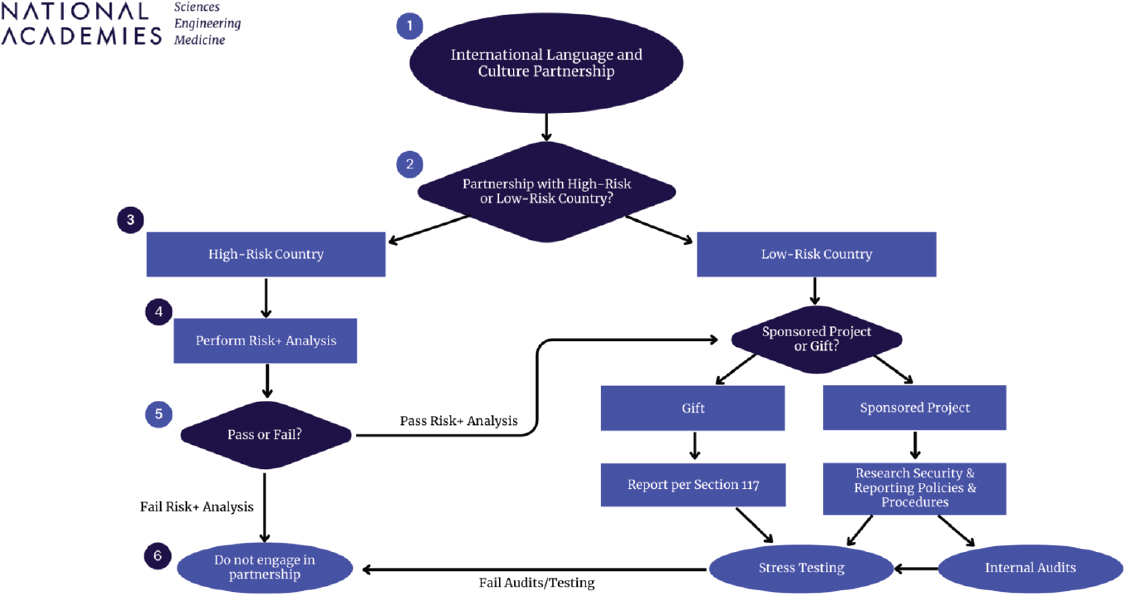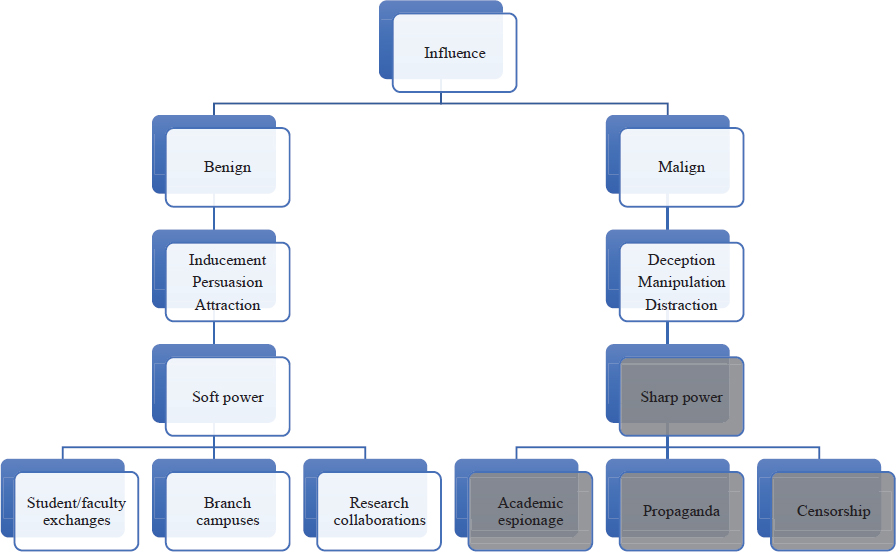Foreign-Funded Language and Culture Institutes at U.S. Institutions of Higher Education: Practices to Assess and Mitigate Risk (2023)
Chapter: Appendix D: Assessing Risk
Appendix D
Assessing Risk
Figure D-1 displays a sample six-step risk assessment with decision points that may lead to accepting or rejecting a higher education institution (HEI) relationship with a foreign partner for language and culture programs.
- Assessment of the partnership—funded language and culture.
- Does the partnership include funding from a high-risk or low-risk country as defined by the U.S. State Department or other U.S. government agency as a “country of concern”? See also Appendix C for additional considerations.
- The “high-risk” or “low-risk” pathways follow different paths to either a formal engagement or not.
- Each HEI develops its own risk-benefit analysis based on its policies.
Pass or fail of the risk-benefit analysis (step 5) leads to either “no engagement” (step 6) or into an agreement with the foreign entity for a program. Best practices for including the new partnership (center, institute, or other) into the shared governance structure of the HEI apply as noted in Recommendation 1 (see Chapter 6). Reporting of either gifts or contracts to support the partnership need to follow Section 117 of the Higher Education Act. For all projects, regular reviews and audits, together with regular risk/benefit analyses is recommended (see Recommendation 1).
Figure D-2 shows the relation between “soft power” and “sharp power” in higher education and provides examples of each. Long and O’Connell note that “sharp power” as defined by Christopher Walker can “pierce, penetrate, or perforate the political and information environments in the targeted countries” and

SOURCE: Peter Dorhout, personal communication, May 4, 2023.

SOURCE: Long and O’Connell, 2022.
can be used to “describe the foreign influence approaches of authoritarian regimes that are neither conventionally hard nor soft” (Walker and Ludwig, 2017; Long and O’Connell, 2022).



